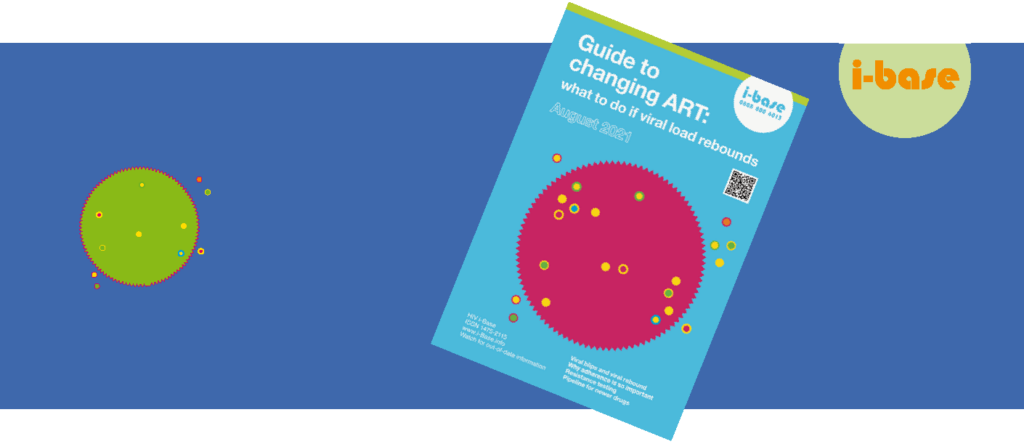Changing ART: what to do if viral load rebounds

This is a resource about changing HIV treatment (ART) and drug resistance. (January 2025).
This guide covers about 50 pages online (many of them are short). The PDF booklet is an 8-page summary with links to the online sections.
- Download PDF (300 KB) – 8-page booklet.
- Order print copy – 8-page booklet.
Introduction
Summary
1. Reasons to change and viral load
- Reasons to change ART
- If your viral load never became undetectable…
- What if your viral load rebounds?
- Viral load blips
- Confirmed viral rebound
- How can drugs “fail” when I feel fine?
- Do some drugs develop resistance more easily?
2. Reasons a combination can fail
3. Adherence and monitoring tests
- Why adherence is linked to drug resistance
- What if I forget my meds?
- Adherence tips
- Adherence diary
- Important monitoring tests
- Viral load tests
- Resistance tests
- What resistance test results mean
- TDM (Therapeutic Drug Monitoring)
- IQ and VIQ
- Viral tropism
- Getting the tests in the UK
4. When to change… which drugs?
- When should I change and which drugs can I use?
- How do I choose new drugs?
- General principles
- Cross-resistance by drug class
- When to use new drugs and when to wait?
- Pipeline drugs
- Expanded access drugs
- Non-ARV drugs
- Other treatment strategies
- Intensify treatment
- T-20 (now discontinued)
- Using five or more drugs
- Treatment interruptions
- Drug recycling using viral fitness
- Benefit of staying on treatment using drugs that are still active
Changing treatment to avoid side effects
CD4 and viral load results
ARV treatment history
Further information
Feedback
Glossary
Credits
Tables and diagrams
References
This guide was written and compiled by Simon Collins for HIV i-Base. Thanks to the advisory group of HIV positive people and healthcare professionals for comments.
About our guides
Information about how we produced this guide and the importance of using language that is direct and easy to understand.
This includes information on how to write non technical medical information that may be useful as a resource for other organisations.
Last updated: 1 January 2025.
